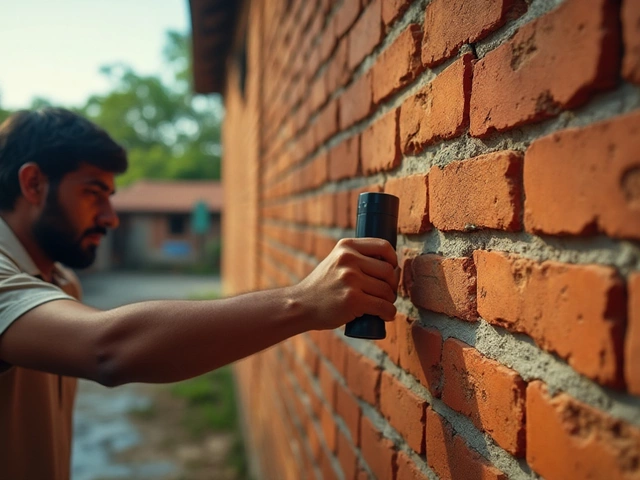If you spot a crack creeping across your basement wall, your first thought is probably, “How bad is this?” It’s one of those things every homeowner secretly dreads. The line between a harmless hairline and a major problem isn’t always obvious. Some folks panic at everything, others shrug off real warning signs until it’s too late. Here’s what trips people up: one foundation crack is not like another—they can mean anything from harmless settling to looming disaster. It’s not just about how they look, but where they are, how fast they grow, and yes, how big they really get.
Understanding Foundation Cracks: Types, Causes, and What’s Normal
Cracks in a foundation are pretty much inevitable. Concrete is strong, but it’s not invincible. It’s built to bear thousands of pounds, push back groundwater, and stay rock steady. Still, over time, concrete shrinks as it cures and the earth itself is always moving.
There are a few main types of cracks you’ll see. The tiny vertical cracks less than 1/8 inch wide? They usually happen within the first year after pouring the foundation, thanks to normal shrinkage. Builders call these “hairline cracks,” and they usually aren’t worth stressing over. Then there are wider vertical cracks—wider than a nickel, which is about 1/8 inch—that can suggest more movement than normal. Horizontal cracks? That’s the big red flag. Hydrostatic pressure from water in the soil or poor drainage can push your wall inward, causing a horizontal split. Step cracks, which look like little staircases running along mortar lines in concrete block walls, can mean settlement under part of the house or pressure from outside.
You might spot a few odd-shaped cracks, such as diagonal lines running from a corner, or Y-shaped fissures. What matters is their size, location, and whether they’re changing over time. If they’re creeping bigger or shifting shape, something’s still moving. And if you see dampness, efflorescence (white powdery deposits), or chunks of wall crumbling out? You’re dealing with more than just stress cracks from drying concrete.
What causes cracks to begin with? Besides normal settling, you’ve got soil movement—the ground gets wet, expands, then dries out and shrinks. Poor drainage, big trees too close to the house, and even how your gutters work, can play a role. Freeze-thaw cycles don’t help either. If you live somewhere cold, water gets into cracks, freezes, and pushes concrete apart every winter. If your foundation is old, there’s simply more time for little issues to turn into bigger ones.
Fun fact: In 2011, an insurance study showed more than a quarter of all home insurance claims in the US related to structural movement involved foundation cracks that homeowners noticed too late. Paying attention to even what seems like a small crack really can save you thousands.
How Big Is Too Big? Measuring, Tracking, and Knowing When to Worry
This is the question that keeps people up at night: how big does a foundation crack have to be before you start sweating? Most professionals agree that any crack wider than 1/8 inch is cause for a closer look. That’s about the width of a standard pencil. If you can fit a nickel in it? Time to really pay attention. The foundation cracks keyword pops up in home inspection reports whenever width passes this simple threshold.
That’s not the end of the story, though. The direction of the crack adds extra meaning. Vertical cracks up to 1/8 inch wide and not growing? Usually not a crisis. But if you spot new ones appearing near doors, windows, or where walls meet the ceiling, the house might be shifting unevenly. Wider vertical cracks—especially those that you can stick a coin into—suggest movement or settling that could affect structural stability.
The really serious ones? Horizontal cracks, especially in basement walls. Anything wider than 1/4 inch, and that wall could be bowing from outside pressure. Step cracks wider than 1/8 inch, especially if the blocks are misaligned or sticking out, need attention. And cracks that run at a 45-degree angle from corners could mean the foundation is rotating because of soil movement underneath.
Tracking is key. Grab a measuring tape and write down the width in a notebook, along with the date. Sketch out where the crack starts, ends, and what shape it is. Every month, check if it’s growing. Some homeowners stick a strip of masking tape across the crack and mark the edges. If in a month or two that crack has widened past your marks, movement’s happening. If a previously dry crack suddenly lets in water after a rainstorm, that’s never a good sign.
Home inspectors use a “crack monitor”—two clear plastic plates that bolt across a crack to measure movement down to the millimeter. You probably don’t need to buy one unless you really want peace of mind. But if you see a new crack getting bigger every few weeks or spot secondary symptoms like jammed doors, sloping floors, or popping drywall joints, that’s your cue to call a foundation specialist—not your local handyman.
I heard a story from a neighbor whose drywall joints popped open every spring until he finally had a structural engineer show up. Turned out his crack started off tiny, but within two years, it was over 1/4 inch wide and the wall had shifted enough to require support beams. Delaying didn’t save him money. It just made the fix more expensive later on.

Identifying Warning Signs Beyond Crack Size
Size tells part of the story, but it’s not the only thing that signals trouble. One overlooked sign: if a crack runs through the full thickness of a wall, you’ll see daylight or water coming through. This means the wall has fully separated and lost strength. Any bulging or bowing near a crack is cause for immediate concern—a wall being pushed in is a worst-case scenario.
If you notice doors and windows suddenly sticking or not latching, that’s a classic hint the foundation moved enough to twist your home’s frame. Look at your floors. Sloping or sagging spots, or new gaps under baseboards, are all signs of uneven settling. You might spot nail pops or fresh cracks in drywall above foundation cracks, tracing the path of stress up from below. Even weird drafts or cold spots, especially in a finished basement, can mark places where new gaps let air and water sneak in.
Don’t ignore water stains, rust around rebar, or visible mold on basement walls. These may start off as annoyances, but chronic moisture can make cracks grow wider and create structural headaches later. Discoloration—especially those white or green crusty stains—means water is leaching minerals out of your wall, a process that slowly eats away at concrete from inside out.
Visible shifting or cracking in exterior brick, too, is rarely just a cosmetic problem. If your brickwork zigzags along a crack or mortar lines split, chances are the foundation underneath just moved. Even if the foundation crack itself doesn’t look that big, the damage has traveled farther up. The scariest part? Sometimes, the biggest cracks hide behind finished drywall and aren’t visible without cutting a hole to check.
If you ever find yourself placing a level on floorboards or measuring window frames because something just “feels off,” trust your gut—you’re probably picking up on real stress traveling through the house. It’s worth calling in an expert if you see a combination of these symptoms, even if no single crack seems massive. Prevention really does pay off. Lydia still teases me about the month I wouldn’t shut up about a “weird little zig-zag line” by our water heater, but finding and sealing it kept damp out and saved us calling in expensive repairs later.
What to Do Next: Repair, When to Get Help, and Stopping Problems Early
If a foundation crack is smaller than 1/8 inch, not leaking, not growing, and runs vertically, a little repair can buy peace of mind and prevent future issues. Epoxy or polyurethane crack injection kits from the hardware store work for most hairline cracks. Clean out loose material, inject the sealant, and let it cure. For cosmetic cracks in above-ground walls, they can be caulked or patched with masonry sealer. Always keep an eye on them for changes—to catch problems before they escalate.
Bigger cracks—over 1/8 inch wide, growing, or shaped horizontally—require more than a DIY patch. That’s when it’s smart to call a licensed structural engineer or a foundation specialist. They can do a proper inspection, find the root cause, and recommend custom fixes. Sometimes, it means adding support beams or anchors to stop walls from bowing. Sometimes, it’s about fixing drainage so water doesn’t keep pushing on your foundation. In rare cases—say, cracks wider than 1/2 inch, severe wall bulging, or ongoing water leaks—major repair such as underpinning or wall rebuilding is needed.
How much do repairs run? Small crack seal jobs are often under a couple hundred bucks if you do it yourself. Larger fixes can range from a thousand up to tens of thousands if the structure needs reinforcement. Insurance rarely covers foundation repairs unless it’s caused by a sudden leak or event. Don’t wait for a small problem to grow into a wallet-busting headache. It’s easier (and cheaper) to keep water away from your foundation than fixing cracked walls. Clean your gutters regularly, slope soil away from your house, and trim overgrown trees whose roots might pry at your slab. I rip out any shrubs within four feet of our basement just to be safe.
If you ever decide to sell your house, buyers get nervous if home inspection reports mention foundation cracks, even old repaired ones. Thorough documentation—a logbook, dates, repair receipts, even pictures—can make all the difference for peace of mind or when negotiating price. Transparency goes a long way.
One quirky tip: If you ever want to check if a crack is letting water in or if the surface is damp, tape a square of plastic sheet to the wall overnight. In the morning, if you find condensation underneath, it’s a sign of active seepage. If not, it might just be an old, stable crack. Don’t put off fixing what you can see—and never ignore what you can’t.




Write a comment